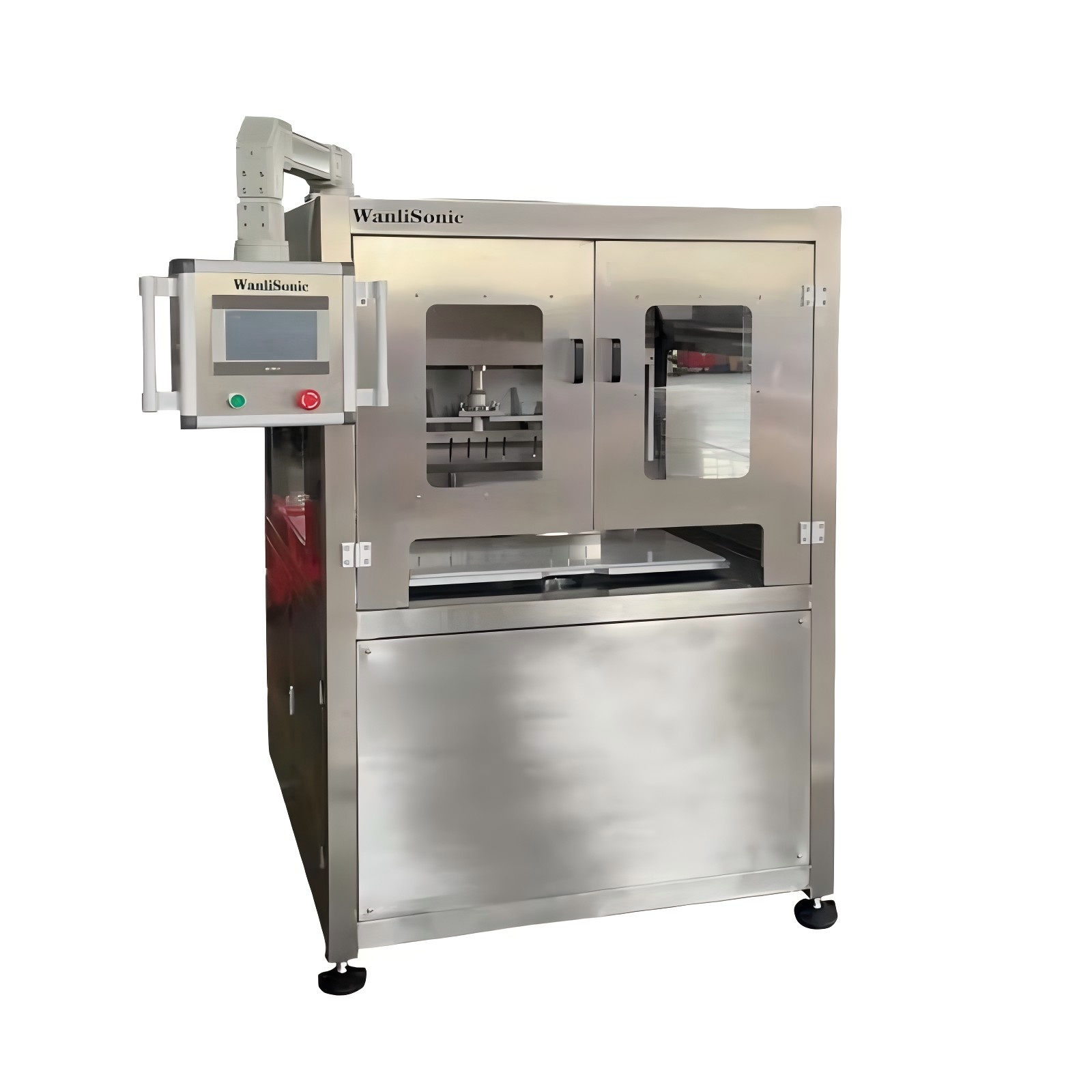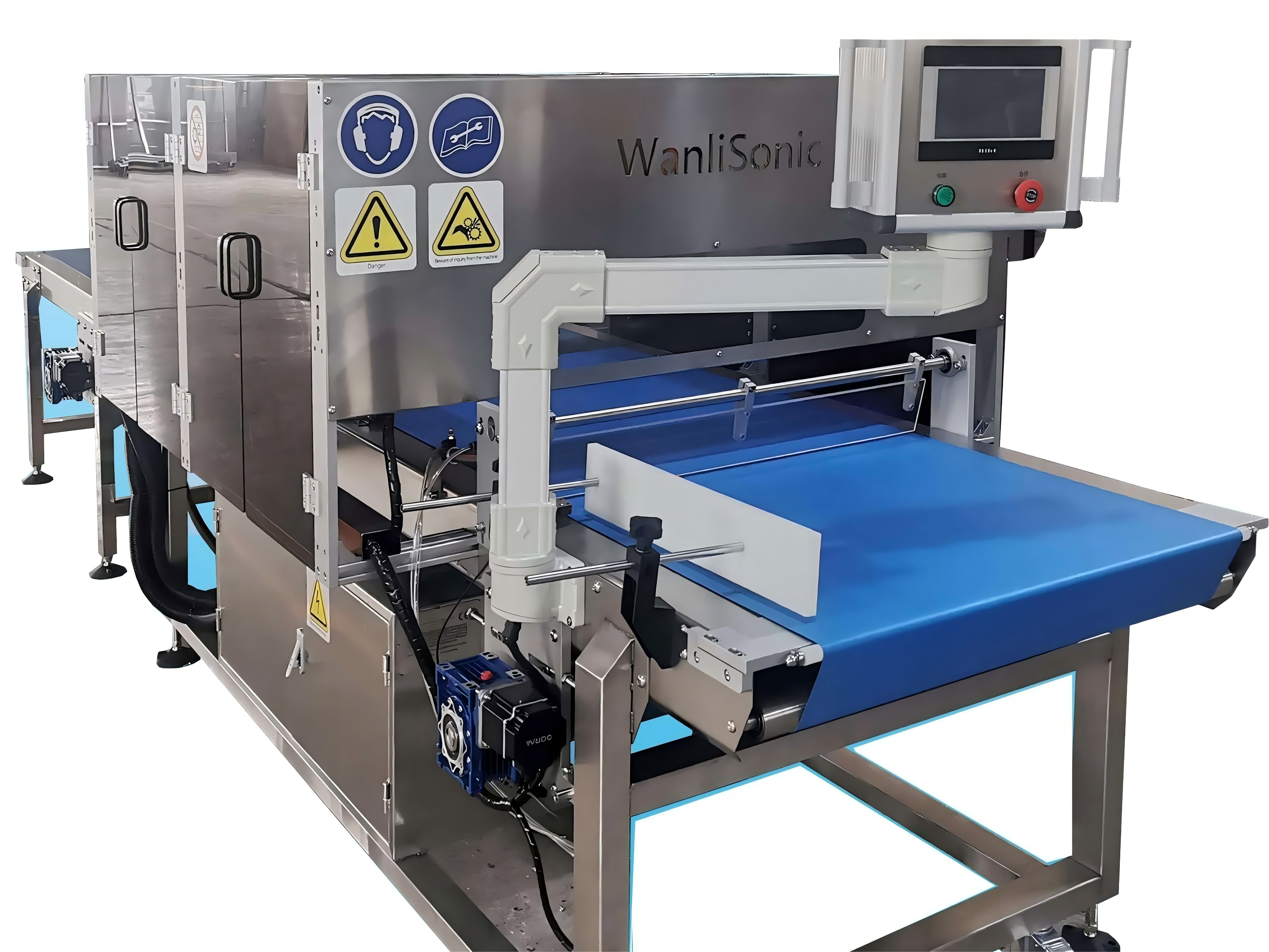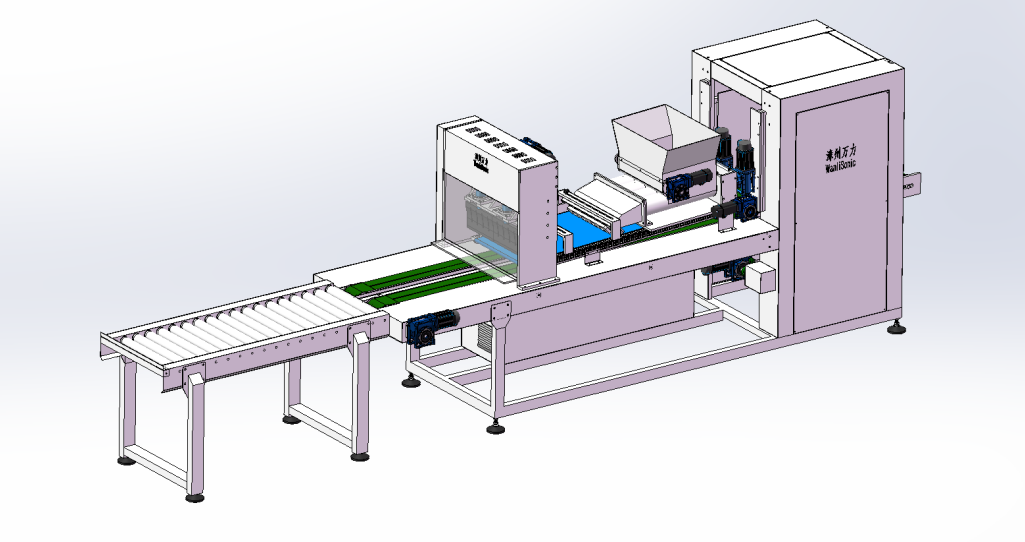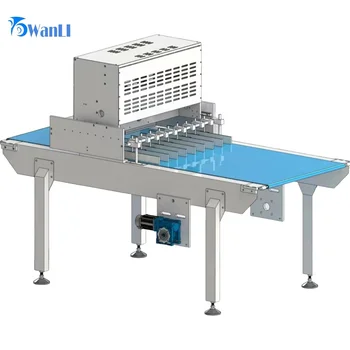Ultrasonic Cookie Cutting Machine
In the bustling world of commercial baking, efficiency, precision, and consistency are paramount. Bakers continuously strive to perfect their recipes while optimizing production processes to meet the ever-growing demands of consumers. Among the various innovations that have revolutionized the baking industry, the ultrasonic cookie cutting machine stands out as a game-changer. This advanced technology integrates ultrasonic waves into cookie cutting, offering unparalleled accuracy, speed, and versatility. Today, we delve into the intricacies of ultrasonic cookie cutting machines, focusing on three primary types: automatic tray loaders, extrusion machines, and slicing machines. By the end of this blog, you’ll understand how these machines are transforming cookie production and why they are indispensable for modern bakeries.
Introduction: The Evolution of Cookie Cutting
Cookie cutting has evolved significantly from the traditional hand-held cutters to more sophisticated mechanical devices. Early mechanical cookie cutters, while an improvement, still lacked the precision and speed required for large-scale production. The advent of ultrasonic technology marked a significant leap forward, introducing a non-contact cutting method that leverages high-frequency vibrations to slice through dough with remarkable accuracy and minimal waste.
Ultrasonic cookie cutting machines are designed to cater to different baking needs and preferences. Three primary types dominate the market: automatic tray loaders, extrusion machines, and slicing machines. Each type serves a unique purpose and offers distinct advantages, making them suitable for various stages of the baking process. Let’s explore each in detail.
1. Automatic Tray Loader: Efficiency at Its Core
Automatic tray loaders are the backbone of modern cookie production lines. These machines automate the loading of cookie dough onto baking trays, significantly reducing manual labor and increasing production speed. The integration of ultrasonic technology in automatic tray loaders elevates this process to new heights.
How it works: The ultrasonic wave generator vibrates a blade at an incredibly high frequency, creating a precise and clean cut through the dough. This non-contact method minimizes dough deformation and ensures uniform cookie shapes. The loader is equipped with a conveyor belt that moves trays seamlessly through the cutting station. Sensors and robotic arms ensure precise placement of each dough piece, maintaining consistent spacing and preventing overcrowding.
Advantages:
Increased Efficiency: Automation reduces manual handling, speeding up production.
Precision: Ultrasonic cutting eliminates the need for reshaping or trimming, ensuring every cookie is perfect.
Consistency: Uniform cookie shapes and sizes lead to consistent baking results.
Hygiene: Reduced human contact minimizes the risk of contamination.
Automatic tray loaders are ideal for bakeries producing large volumes of cookies, such as those supplying supermarkets or online retailers. They optimize workflow, ensuring that high-quality cookies are consistently produced at a rapid pace.
2. Extrusion Machine: Shaping Dough with Precision
Extrusion machines are another vital component in the ultrasonic cookie cutting arsenal. Unlike automatic tray loaders, extrusion machines shape the dough into desired forms before cutting. This method is particularly suitable for cookies that require intricate shapes or specific textures.
How it works: Dough is fed into the extruder, which forces it through a die with the desired shape. As the dough emerges, an ultrasonic blade slices it into individual cookies. The precision of ultrasonic cutting ensures that even delicate shapes are perfectly formed, with no waste or deformation.
Advantages:
Versatility: Extrusion machines can create a wide variety of shapes and sizes.
Control: Bakers can adjust the extruder settings to achieve the desired dough consistency and cookie thickness.
Efficiency: Continuous extrusion and cutting minimize downtime.
Waste Reduction: Precision cutting minimizes dough scraps and offcuts.
Extrusion machines are perfect for bakeries specializing in unique or premium cookie lines. They allow for creativity and innovation, enabling bakers to explore new designs and textures without compromising on production speed.
3. Slicing Machine: Perfection in Every Slice
Slicing machines are designed for cookies that require uniform, thin slices, such as shortbread or biscotti. These machines use ultrasonic technology to achieve precise, even cuts that maintain the integrity of the dough.
How it works: A roller flattens the dough to a consistent thickness, and an ultrasonic blade slices it into thin pieces. The high-frequency vibrations of the blade ensure a clean, smooth cut with minimal dough compression. The slices are then conveyed to the next stage of production, whether it’s baking, decorating, or packaging.
Advantages:
Uniformity: Every slice is perfectly even, enhancing the visual appeal and baking consistency.
Speed: Ultrasonic slicing is faster than traditional methods, boosting production capacity.
Consistency: Precision cutting guarantees uniform baking times and results.
Ease of Use: Most slicing machines are designed for easy operation and maintenance.
Slicing machines are invaluable for bakeries producing thin, delicate cookies. They ensure that every batch meets the highest standards of quality and consistency, delighting customers with perfect results.
Conclusion: The Future of Cookie Production
The ultrasonic cookie cutting machine represents a significant advancement in baking technology, transforming cookie production from a labor-intensive task to an efficient, precision-driven process. Automatic tray loaders, extrusion machines, and slicing machines each serve unique roles, offering bakers unparalleled control over their production lines.
By leveraging ultrasonic technology, these machines achieve remarkable accuracy, speed, and consistency. They reduce waste, minimize manual labor, and enhance hygiene, all while enabling bakers to explore new designs and textures. Whether you’re a small-scale artisan bakery or a large-scale commercial producer, ultrasonic cookie cutting machines can revolutionize your production process, taking your baked goods to the next level.
As the baking industry continues to evolve, ultrasonic technology will undoubtedly play a pivotal role in driving innovation and efficiency. By embracing these advanced machines, bakeries can stay ahead of the competition, delivering high-quality cookies that meet the demands of discerning consumers. The future of cookie production is bright, and ultrasonic cookie cutting machines are leading the way.






